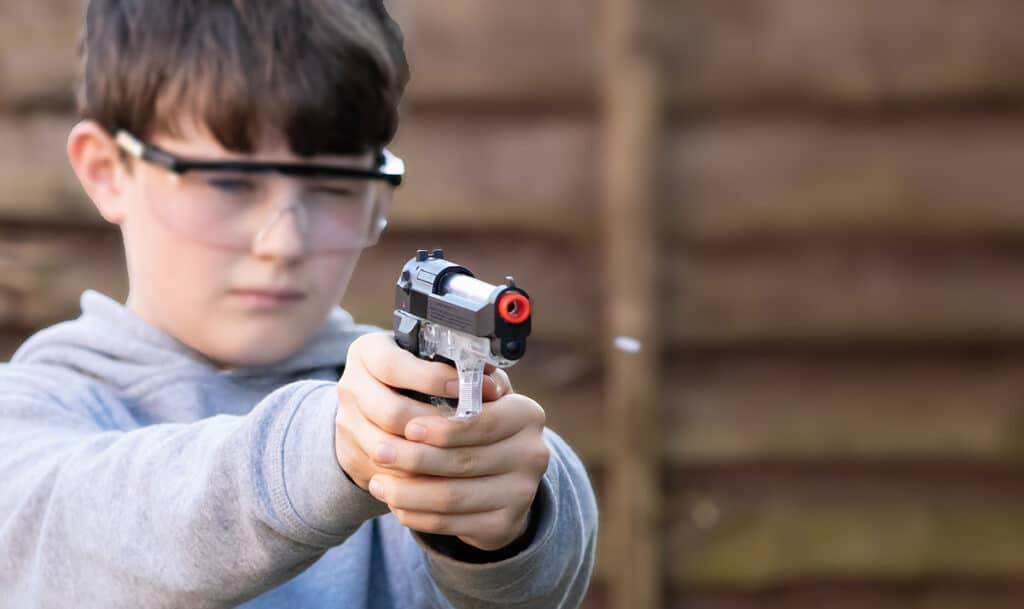In February of 2022, two teenagers on a misguided joy ride were arrested for firing an airsoft gun at multiple pedestrians (Polacheck, 2022). Although none of the victims were seriously injured, police emphasized that airsoft guns can inflict major injuries and that targeting other people is a criminal offense (Reavy, 2022).
The juvenile suspects admitted to participating in a TikTok challenge (Polacheck, 2022). This has not been the first time teens have recorded themselves shooting people with toy guns for TikTok fame. Last year, two teenage girls were shot with BB guns in a park by kids taking part in a similar dare. Thankfully, neither was seriously injured (Malkin, 2021).

Are TikTok Challenges Dangerous?
Trends and challenges promoted on social media can have severe and long-term negative effects on children, particularly on their physical, emotional, and developmental health. While adults aren’t immune to social media risks, teens are especially at risk because their brains are still developing. The prefrontal cortex—the part of the brain in charge of planning, prioritizing, and controlling impulses—doesn’t finish maturing until the mid to late twenties (National Institute of Mental Health, n.d.).
The prefrontal cortex . . . is responsible for skills like planning, prioritizing, and controlling impulses. Because these skills are still developing, teens are more likely to engage in risky behaviors without considering the potential results of their decisions.
—National Institute of Mental Health
Moving Forward
When kids inevitably find out about TikTok Challenges, these tips can help prepare them to think before they act.
- Caregivers can show interest in the social media trends and challenges kids are consuming, creating, and sharing. Sit down together and talk about the content they view and connections they have made.
- Find a safe challenge and do it together!
- Teach kids to question the safety of a challenge before they try it out:
- Why do I want to participate in this TikTok challenge?
- Will it keep me safe? What about others?
- What do I stand to gain?
- What might I lose? Could there be long-term consequences?
- What might go wrong?
Although we can’t protect kids from everything, through open and frequent discussions, we can help kids consider their own wellbeing and the safety of others.

